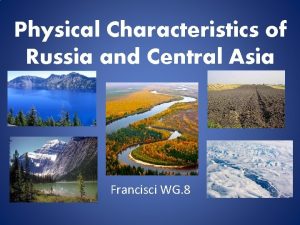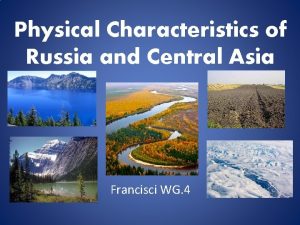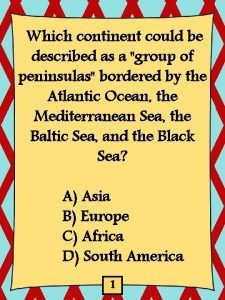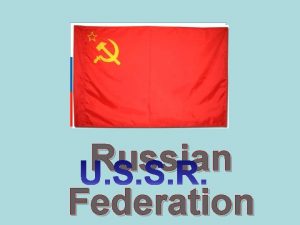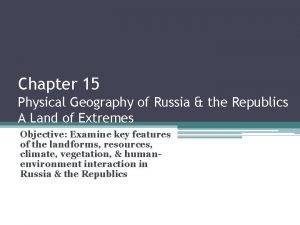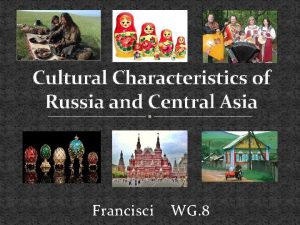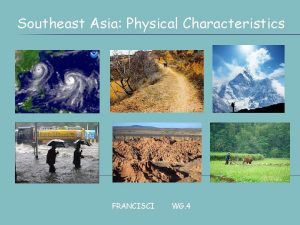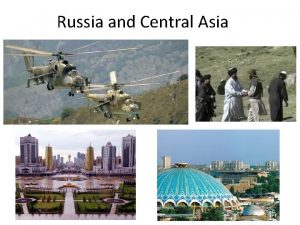Physical Characteristics of Russia and Central Asia Francisci






- Slides: 6

Physical Characteristics of Russia and Central Asia Francisci WG. 8

Russia: The Facts • Largest nation in the world (2 x size of U. S. ) • Russia is larger than Pluto • 25% of Russia is located in Europe and 75% is located in Asia (Eurasia) • 77% of Russia is located in Siberia • Russia covers 11 different time zones (9 hours from east to west)

The Climate • Climate in Russia and Central Asia varies greatly due to the mountain ranges, oceans and the enormous size of the area. • Earth’s coldest temperature was recorded in Russia (-90⁰F). • Climate regions include: – Tundra: treeless Arctic region with permafrost (frozen soil); extreme northern regions. – Taiga: Frozen forest of coniferous trees – mostly in Siberia. – Steppe: Semi-arid and found in Central Asia.

Mountain Areas • The Ural Mountains are sometimes referred to as the boundary between Europe and Asia. • The mountains act as a natural barrier to stop the wind from the Atlantic Ocean from going eastward. • The area west of the Ural Mountains has rich soil called chernozem: very black and rich soil filled with nutrients that is good for agricultural crops. • Because of this black soil, this region is commonly referred to as the black earth belt.

Sleeping Land • Siberia: A vast Russian province encompassing most of Northern Russia found east of the Ural Mountains. • Siberia is cold and dry because of the Ural Mountains blocking the moisture on one side. • Siberia extends from the Ural Mountains to the Pacific Ocean in the east. • This region is rich in natural gas, mineral resources and oil.

Lakes and Rivers • Lake Baikal in Southern Siberia is the world’s deepest freshwater lake. – Contains as much water as all of the Great Lakes combined. • Many of the rivers in this region flow northward and empty into the Arctic Ocean. – Example: Ob River


